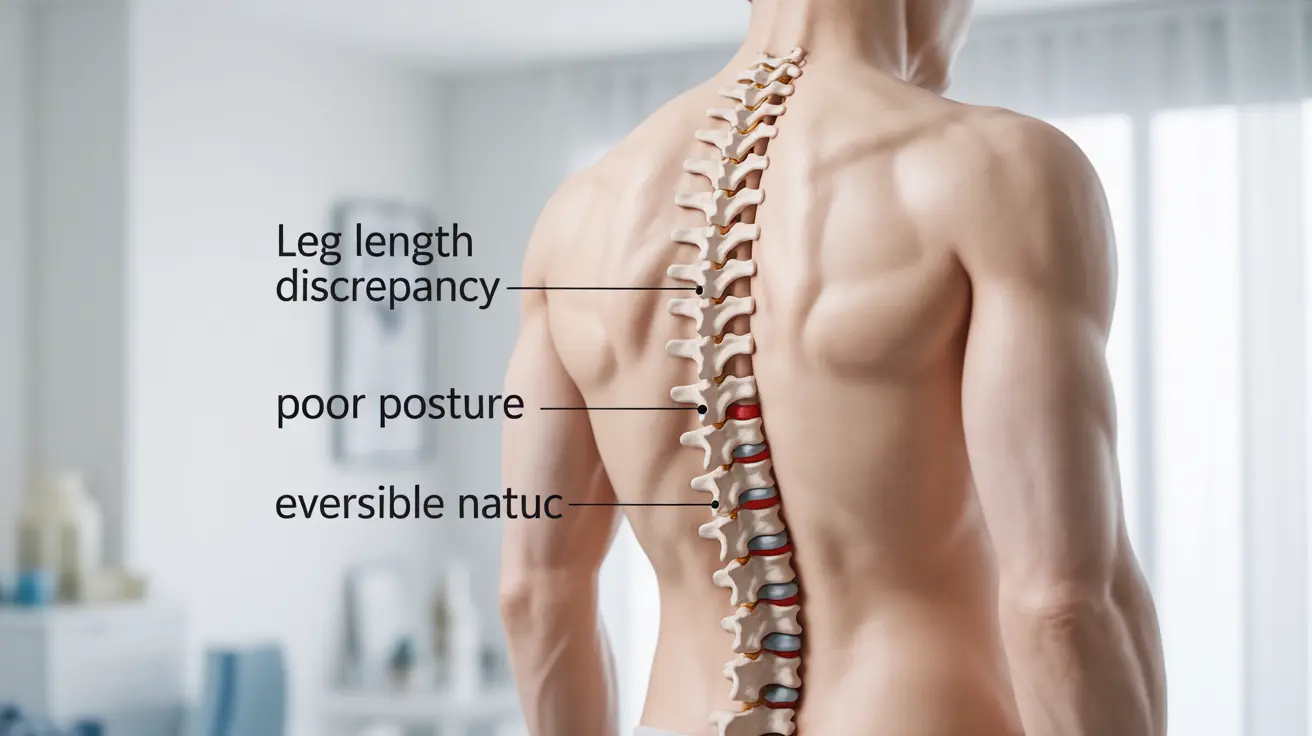Functional scoliosis is a temporary form of spinal curvature that occurs when an underlying condition causes the spine to appear curved, even though the spine itself is structurally normal. Unlike structural scoliosis, where the spine has a permanent curve, functional scoliosis can often be corrected by addressing the underlying cause.
Understanding this condition is crucial for proper diagnosis and treatment, as the approach differs significantly from other types of scoliosis. This comprehensive guide will explore the causes, symptoms, and treatment options for functional scoliosis.
Key Differences Between Functional and Structural Scoliosis
Functional scoliosis differs from structural scoliosis in several important ways. While structural scoliosis involves permanent changes to the spine's shape, functional scoliosis is temporary and reversible when the underlying cause is addressed. The spine remains structurally normal, but external factors cause it to appear curved.
Common Causes of Functional Scoliosis
Several conditions can lead to the development of functional scoliosis:
- Leg length discrepancy
- Muscle spasms
- Poor posture
- Inflammatory conditions
- Hip misalignment
- Nerve irritation
These underlying conditions create an imbalance in the body that forces the spine to curve as a compensatory mechanism.
Recognizing the Signs and Symptoms
The symptoms of functional scoliosis can vary but typically include:
- Uneven shoulders
- One hip appearing higher than the other
- Visible curve in the spine
- Back pain or discomfort
- Altered gait pattern
- Muscle fatigue
Unlike structural scoliosis, these symptoms often improve or disappear when the person changes position or addresses the underlying cause.
Diagnosis and Assessment
Healthcare providers use several methods to diagnose functional scoliosis:
- Physical examination
- Standing and seated X-rays
- Leg length measurements
- Posture analysis
- Muscle strength testing
The key diagnostic feature is that the curve typically disappears when the patient bends forward or lies down.
Treatment Approaches
Conservative Management
Most cases of functional scoliosis respond well to conservative treatment methods:
- Physical therapy
- Postural exercises
- Core strengthening
- Stretching routines
- Shoe lifts (for leg length discrepancy)
- Manual therapy techniques
Addressing Underlying Causes
Treatment success depends largely on identifying and correcting the root cause. This might involve:
- Correcting leg length differences
- Improving posture habits
- Treating muscle imbalances
- Managing inflammatory conditions
- Addressing hip alignment issues
Prevention and Maintenance
Several strategies can help prevent functional scoliosis or maintain improvements after treatment:
- Regular exercise
- Proper posture awareness
- Ergonomic workspace setup
- Core-strengthening activities
- Regular physical activity
- Maintaining healthy body weight
Frequently Asked Questions
What are the common causes of functional scoliosis, and how does it differ from structural scoliosis?
Functional scoliosis is caused by temporary conditions like leg length discrepancy, muscle spasms, or poor posture. Unlike structural scoliosis, which involves permanent spine changes, functional scoliosis is reversible when the underlying cause is addressed.
How is functional scoliosis treated, and what are the chances of complete recovery?
Treatment typically involves addressing the underlying cause through physical therapy, postural correction, and specific exercises. The chances of complete recovery are excellent when the root cause is properly identified and treated, as the spine itself is structurally normal.
Can a leg length discrepancy cause functional scoliosis, and what can be done to correct it?
Yes, leg length discrepancy is a common cause of functional scoliosis. Treatment may include shoe lifts, orthotics, or in some cases, surgical intervention to equalize leg lengths. Physical therapy can help address associated muscle imbalances.
What are the typical symptoms of functional scoliosis, and how does it affect posture?
Typical symptoms include uneven shoulders, hip asymmetry, and visible spine curvature. It affects posture by creating compensatory changes in body alignment, but these changes are temporary and improve with proper treatment.
How can maintaining good posture help prevent or reduce the risk of developing functional scoliosis?
Good posture helps maintain proper spine alignment and prevents muscle imbalances that can lead to functional scoliosis. Regular posture awareness, ergonomic adjustments, and core-strengthening exercises are key preventive measures.




